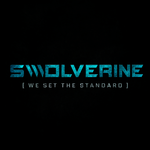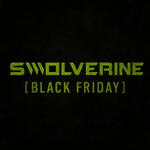Selective androgen receptor modulators (SARMs) like RAD-140 (Testolone) promise targeted, “dry” muscle and strength with fewer systemic side effects. Trenbolone, by contrast, has a reputation as a brutally effective anabolic steroid—famous for rapid strength gains, hard conditioning, and powerful recomposition, but also infamous for harsh side effects.
This comparison matters because lifters often ask a simple question with big consequences: Can RAD-140 deliver results anywhere close to Trenbolone, with less risk and complexity? To answer it, we need to move beyond hype and look at how each compound actually works in the body, what outcomes they produce, and what trade-offs they demand.
In this guide, you’ll learn:
→ What RAD-140 and Trenbolone are, and how their mechanisms differ (selectivity vs. raw potency)
→ Where each shines for performance, physique, and recomposition
→ The real side-effect profiles you should expect (suppression, cardiovascular strain, sleep/mood issues, liver enzymes, etc.)
→ Practical dosing conventions, stacking logic (why a testosterone base matters), and PCT timelines
→ Legality, sourcing pitfalls, and anti-doping considerations
→ How to choose based on your goals, risk tolerance, and competitive constraints
What Is RAD-140 (Testolone)?
RAD-140 is a SARM—basically a lab-built compound designed to switch on anabolic signaling mostly in muscle and bone without dragging the rest of your hormones along for the ride. In plain English: it aims to deliver the good stuff (lean tissue, strength, better training output) with fewer of the classic steroid side effects.
Why lifters like it: RAD-140 tends to produce dry, clean gains. You’ll notice fuller, harder muscle without the puffiness that can come from aromatizing compounds. It’s oral and once-a-day, so no pin schedule, and it slots nicely into cuts or recomps where the goal is to preserve (or add) lean mass while calories are tighter.
What to know before you romanticize it: RAD-140 still suppresses natural testosterone. That’s the part the marketing conveniently forgets. If you run it solo, you can feel the low-T downsides—libido, energy, mood—especially after you come off. It also lives in the real world of liver enzymes and lipids (it’s oral; your liver does the work), and long-term human safety data just isn’t there yet because it’s not an approved medication. Quality can vary a lot depending on who made the bottle.
How people actually use it: think moderate, time-boxed cycles (commonly 6–8 weeks), 10–20 mg/day for most, sometimes higher with more suppression. Many experienced athletes pair it with a testosterone base so hormones don’t crater, then run a simple SERM-based PCT after. The draw is that “tight,” athletic look—lean muscle, minimal bloat, noticeable strength creep—without rebuilding your entire life around injections.
Bottom line: RAD-140 is the low-drama, higher-convenience way to nudge physique and performance forward—more selective than steroids, but not side-effect-free and definitely not a testosterone replacement. If you want lean, aesthetic progress with simpler logistics, it makes sense. If you’re chasing stage-level, sledgehammer results, you’re comparing a scalpel to a wrecking ball—and that’s where compounds like tren live.
What Is Trenbolone?
Trenbolone is a 19-nor anabolic steroid that lifters use for one reason: it’s brutally effective. It was never approved for human medicine in the U.S., but in physique sports it built a reputation for fast strength increases, dense, “grainy” muscle, and dramatic recomposition—holding (or even adding) muscle while calories are tight. You’ll see it in two common forms: Trenbolone Acetate (short-acting, easier to adjust or stop if side effects show up) and Trenbolone Enanthate (longer-acting, steadier levels, slower to clear).
What makes it different is how aggressively it drives anabolic signaling and nutrient partitioning. Food “leans” harder toward muscle and away from fat. There’s no aromatization to estrogen, so you don’t get the watery look you might see with higher-dose testosterone. The flip side: even though it doesn’t aromatize, tren still hits your system hard. Sleep can get choppy, night sweats and irritability are common, blood pressure and lipids can drift the wrong direction, and suppression is not subtle—you’re shut down. That’s why experienced users keep a testosterone base in the mix: tren builds, but test keeps the lights on hormonally (libido, mood, general wellbeing).
Bottom line: tren is the industry’s “sledgehammer.” If you’re chasing stage-lean hardness or top-end strength and you’re willing to accept a rougher side-effect profile—with real monitoring and recovery plans—it delivers. If you want cleaner, simpler, or you’re still early in your journey, it’s overkill.
Mechanism of Action: Selectivity (RAD-140) vs. Potency (Tren)
How RAD-140 Works
RAD-140 is a selective androgen receptor modulator. Think “targeted signal.”
-
Muscle/Bone targeting: Binds strongly to androgen receptors in skeletal muscle and bone, telling those tissues to turn up protein synthesis and hold nitrogen. Result: easier rebuilding and retention of lean mass.
-
No aromatization: It doesn’t convert to estrogen. That trims down bloat and gyno risk, but also means you miss estrogen’s protective roles (bone, joints, some cardiovascular support).
-
No 5-alpha reduction to DHT: Without conversion to DHT, you typically see fewer prostate/skin-driven sides than with high-dose testosterone or DHT-derivatives.
-
Once-daily signal: With a ~day-long half-life, a single daily dose keeps receptor activation steady without peaks and valleys.
What that means in the gym: A clean, “dry” anabolic push—noticeable strength and hardness—without the systemic hormonal cascade you get from steroids.
How Trenbolone Works
Trenbolone is a 19-nor anabolic steroid. Think “full-system power tool.”
-
Very high AR affinity: Tren binds exceptionally tightly to androgen receptors, amplifying anabolic signaling (protein synthesis, nitrogen retention) and fiercely anti-catabolic under a calorie deficit.
-
No aromatization, still potent: It doesn’t convert to estrogen, so look stays dry/hard. But tren brings broad systemic impact through its sheer androgenic potency.
-
Progestogenic activity: Interacts with progesterone pathways, which can tangle with prolactin/estrogen dynamics (part of why libido/mood can swing for some users).
-
Nutrient partitioning: Shifts calories toward muscle and away from fat—why it excels in recomposition and stage-lean prep.
-
Ester matters: Acetate (fast, adjustable, EOD injections) vs. Enanthate (slower, 2×/week, longer tail). Same engine, different delivery.
What that means in the gym: Aggressive strength spikes, dense “granite” muscle, and elite recomposition—if you can tolerate the systemic strain that comes with it.
The Real Difference: Signal Type, Not Just Strength
-
RAD-140 = target-first, tissue-selective. It turns up the muscle/bone signal while avoiding most downstream hormone conversions. Cleaner look, simpler logistics—but it does not replace the broader hormonal functions of testosterone.
-
Tren = system-wide horsepower. Massive AR activation plus partitioning effects deliver unmatched conditioning and strength—paired with heavier systemic stress and stricter management (labs, blood pressure, sleep, mood).
Benefits — RAD-140 vs Trenbolone (Research-Backed Rationale, No Fluff)
When people search RAD-140 vs Trenbolone, they want outcomes with a WHY behind them. Below are the real-world benefits and the mechanistic justification observed across preclinical models, early human data (where it exists), and comparative pharmacology—explained plainly, without listing references.
RAD-140 (Testolone) — What you can expect, and why it happens
1) Lean, “dry” muscle accretion
→ Why this occurs: RAD-140 selectively activates androgen receptors (AR) in skeletal muscle and bone, tipping the transcriptional program toward protein synthesis (upregulation of myofibrillar protein genes) and nitrogen retention while avoiding aromatization to estrogen. In muscle overload models, AR-selective agonism increases fiber cross-sectional area and total lean mass without extracellular water gain. No conversion to estrogen = less subcutaneous water, so the gains look harder.
2) Strength that climbs without big water swings
→ Why this occurs: AR activation enhances myonuclear number and contractile protein turnover, improving force production per fiber. Because RAD-140 doesn’t pull in water via estrogen pathways, you get neural and muscular efficiency improvements (better bar speed, steadier top-set performance) without the “puffy” scale jumps typical of aromatizing compounds.
3) Recomp support under calorie control
→ Why this occurs: Selective AR signaling preserves lean tissue during energy deficits by suppressing proteolysis pathways (e.g., ubiquitin–proteasome) and maintaining a positive net protein balance. Practically: you hold onto muscle, sometimes add a little, while your deficit does its fat-loss job—hence the smaller waist / sharper lines effect.
4) Bone co-benefits without estrogen conversion
→ Why this occurs: In preclinical models, SARMs stimulate osteoblast activity and reduce osteoclast formation via AR-mediated pathways, supporting bone formation alongside muscle. While testosterone relies in part on estrogen conversion for bone, RAD-140’s direct AR action on bone cells provides a non-estrogen route to skeletal support.
5) Possible neural “feel” benefits (non-ergogenic, but noticeable)
→ Why this occurs: Androgen receptors are expressed in hippocampal and cortical neurons. RAD-140 has shown neuron-protective signaling in injury models via prosurvival cascades (MAPK/PI3K). This doesn’t “boost IQ,” but many users describe steadier drive and focus during cycles—consistent with AR signaling in the CNS.
Reality checks for RAD-140:
→ It still suppresses LH/FSH, so endogenous testosterone drops; without a test base and PCT, libido/energy can dip post-cycle.
→ Oral delivery can raise liver enzymes and unfavorably shift lipids in some users—consistent with hepatic first-pass and AR-linked effects on lipid metabolism.
→ Long-term human efficacy/safety data for athletic outcomes are limited; most hard evidence is mechanism + animal models + early oncology/pharmacology readouts.
Trenbolone — What you can expect, and why it’s so potent
1) Rapid strength increases
→ Why this occurs: Trenbolone has exceptionally high AR affinity—higher than testosterone—leading to strong upregulation of protein synthesis and myofibrillar remodeling. It also boosts intramuscular IGF-1 signaling and satellite-cell activity, which improves force output and recovery between heavy exposures. In short: more contractile machinery, faster.
2) Dense, “granite” conditioning
→ Why this occurs: Tren does not aromatize, so there’s minimal extracellular water. Meanwhile, it drives glycogen storage and myofibrillar protein accrual inside the muscle, sharpening separation and vascular detail as fat drops. The look is dry and etched because there’s real tissue gain with low water noise.
3) Elite recomposition (gain/retain muscle while losing fat)
→ Why this occurs: Trenbolone is a powerful nutrient partitioner. In controlled animal models, tren shifts dietary nitrogen and calories toward lean tissue and away from adipose storage, while strongly suppressing muscle protein breakdown. Applied to prep: you keep muscle “on” even when calories are “off,” so fat loss shows without flattening.
4) Anti-catabolic pressure in a deficit
→ Why this occurs: Beyond AR activation, tren dampens catabolic signaling (including glucocorticoid-related pathways), so proteolysis stays low when cutting. That’s why heavy training remains productive late into a diet—strength holds, and muscle loss is minimized.
5) Work capacity and drive (with a cost)
→ Why this occurs: Androgen signaling increases erythropoiesis (more red blood cells), oxygen-carrying capacity, and neural drive. Lifters feel “on rails” under the bar. The cost is systemic: sleep fragmentation, blood pressure and lipid stress, and mood lability are the predictable flip side of that same high-octane signaling.
Reality checks for Trenbolone:
→ Profound HPTA suppression; PCT is not optional.
→ Common systemic strain: lipids, BP, hematocrit, and sleep/mood—consistent with high-affinity AR activation and progestogenic cross-talk.
→ Zero aromatization means no water bloat, but also no estrogen buffering, which can matter for joints and cardiovascular tone; many users rely on a testosterone base to keep overall hormone function online.
Takeaway for “RAD-140 vs Trenbolone” benefits
-
RAD-140 delivers clean, dry lean mass and steady strength by selectively turning on muscle/bone AR pathways without estrogen/DHT conversion. It shines for recomposition and aesthetic polish with simpler logistics—but it still suppresses hormones and carries typical oral risks.
-
Trenbolone delivers fast strength, dense hardness, and elite recomposition by massively activating AR, improving nutrient partitioning, and crushing catabolism. The trade-off is predictable systemic strain that demands serious monitoring, a testosterone base, and disciplined PCT.
Side Effects & Health Risks — RAD-140 vs Trenbolone
RAD-140 (Testolone): what to watch and why it happens
-
Hormone suppression (LH/FSH → low T)
-
Why: Androgen receptor activation in the hypothalamus/pituitary down-regulates GnRH → LH/FSH. End result: lower endogenous testosterone, with knock-ons to libido, energy, mood, and training drive—especially post-cycle.
-
What to do: Don’t run RAD-140 “solo” if you’re sensitive to low T symptoms; many users keep a testosterone base. Plan a SERM-based PCT to restart production.
-
-
Liver enzyme elevations (oral first-pass)
-
Why: Orals undergo first-pass metabolism; hepatocytes shoulder the load. Transaminases can rise transiently.
-
What to do: Keep cycles 6–8 weeks, avoid stacking multiple orals, hydrate, limit alcohol, and get LFTs checked.
-
-
Lipid shifts (HDL↓ / LDL↑)
-
Why: Androgen signaling modulates hepatic lipid handling; orals are notorious for depressing HDL.
-
What to do: Baseline and post-cycle lipid panels; prioritize omega-3s, fiber, cardio, and time off between runs.
-
-
Blood pressure & pumps
-
Why: AR signaling can alter vascular tone and fluid balance even without estrogen. Training pumps may feel “tight.”
-
What to do: Track BP, electrolytes, hydration. Adjust sodium pre-workout if needed.
-
-
Mood, sleep, and “flat” post-cycle feel
-
Why: Suppression without hormone replacement can blunt dopamine/serotonin tone and sleep quality—especially after cessation.
-
What to do: Plan PCT timing correctly; keep sleep hygiene tight; don’t cut calories aggressively during the first 2–3 weeks off.
-
-
Unknown long-term safety
-
Why: RAD-140 isn’t an approved medication; long-horizon human data are sparse.
-
What to do: Respect conservative dose/duration, get labs, and leave meaningful time off.
-
Minimum monitoring for RAD-140: Total/Free T, LH/FSH, CMP/LFTs, lipid panel, resting BP/HR.
Trenbolone: powerhouse results, predictable costs
-
Profound HPTA shutdown
-
Why: Potent AR agonism strongly suppresses GnRH → LH/FSH; endogenous T tanks.
-
What to do: Always include a testosterone base; PCT is mandatory after ester-appropriate clearance.
-
-
Cardiometabolic strain (lipids, BP, hematocrit)
-
Why: High-affinity AR activation shifts hepatic lipids (HDL↓/LDL↑), raises blood pressure, and can increase RBC/hematocrit, thickening blood.
-
What to do: Baseline and mid-cycle lipid panel, BP checks, and CBC/HCT. Manage with cardio, omega-3s, dietary fiber; donate blood if medically indicated and advised by a clinician.
-
-
Sleep fragmentation & night sweats
-
Why: CNS stimulation and thermogenic/adrenergic effects disturb sleep architecture and thermoregulation.
-
What to do: Earlier training, tight sleep hygiene, cool bedroom, magnesium/glycine pre-bed; consider tapering stimulants.
-
-
Mood/irritability, anxiety
-
Why: CNS AR signaling plus sleep loss elevates irritability and anxiety susceptibility.
-
What to do: Keep life stress low during tren cycles; if mood destabilizes, lower dose or discontinue—don’t “push through.”
-
-
Progestogenic cross-talk & libido issues
-
Why: Tren’s progestin activity can tangle with prolactin/estrogen balance, affecting libido and erectile function despite “dry” look.
-
What to do: Ensure a test base. If symptoms emerge, address overall hormone environment (not just prolactin in isolation). Avoid shotgun “AI everything” without labs.
-
-
GI appetite swings & “tren cough”
-
Why: Appetite regulation can swing either way; post-injection cough comes from solvent/ester trace entering circulation and irritating pulmonary tissue.
-
What to do: Smaller, slower injections; warm oil; rotate sites. Keep calorie targets flexible week-to-week.
-
-
Renal/hepatic signal
-
Why: While not classically hepatotoxic like 17-aa orals, systemic strain can reflect in labs; dehydration worsens markers.
-
What to do: Hydrate, monitor CMP/LFTs, avoid stacking multiple harsh agents.
-
Minimum monitoring for Trenbolone: Total/Free T, E2 (sensitive), prolactin (if symptoms), CBC/HCT, lipid panel, CMP/LFTs, fasting glucose/insulin (optional), resting BP/HR, sleep/mood check-ins.
Practical safety rules of thumb
-
Test base for both: RAD-140 suppresses; tren obliterates—testosterone keeps core hormone functions online.
-
Shortest effective cycle: Favor dose control and 8–10 weeks max for tren (often less with acetate), 6–8 weeks for RAD-140.
-
Lab cadence: Baseline → mid-cycle (week 4–5) → post-cycle (and post-PCT) to confirm recovery.
-
Time off = time on (at least): And only after labs normalize.
-
PCT is planned on day one: Don’t improvise when you’re already suppressed.
Dosing & Administration — RAD-140 vs Trenbolone
Informational only. Not medical advice.
RAD-140 (Testolone) — practical, once-daily rhythm
Typical ranges (seen in practice):
-
10 mg/day — conservative start; lean recomposition with fewer side effects
-
15–20 mg/day — common working range for noticeable strength/physique changes
-
20–30 mg/day — aggressive; more suppression/strain, not necessary for most
Cycle length: 6–8 weeks (avoid pushing beyond ~10 weeks).
Dosing time: Once daily, same time each day (≈16–20 h half-life). Food is optional; pick what your stomach tolerates.
Split doses? Only if you get GI upset—otherwise single daily dose keeps levels steady.
What to pair with it: Many users keep a moderate testosterone base for libido, mood, and overall hormone function.
Labs to plan: Total/Free T, LH/FSH (suppression check), lipid panel, LFTs, CMP, resting BP/HR.
PCT timing (RAD-140):
-
Start 1–2 days after your last dose.
-
Run a SERM-based PCT (e.g., tamoxifen or clomiphene) for 3–4 weeks, then recheck labs.
-
Keep calories at maintenance for the first 2–3 PCT weeks to protect lean mass.
Trenbolone — dose, ester, and injection cadence
Pick your ester (changes the schedule, not the “engine”):
-
Trenbolone Acetate (Tren A): Short ester, fast in/fast out → easier to adjust or bail if sides hit.
-
Common range: 200–400 mg/week
-
Injection cadence: EOD (every other day)
-
Typical duration: 6–8 weeks (often used late in a cut)
-
-
Trenbolone Enanthate (Tren E): Long ester, slower to peak/clear → steadier ride but longer tail.
-
Common range: 300–500 mg/week
-
Injection cadence: 2×/week (e.g., Mon/Thu)
-
Typical duration: 8–10 weeks
-
Testosterone base (non-negotiable):
-
Keep 300–500 mg/week of a long-ester test (e.g., cyp/enan) to maintain libido, mood, and general endocrine function.
-
Manage estrogen with labs/symptoms—don’t blanket-crush it.
Support & monitoring:
-
Baseline → mid-cycle (wk 4–5) → post-cycle labs: lipids, CBC/HCT, LFTs, E2 (sensitive), prolactin (if symptoms), BP/HR.
-
Hydration, daily steps/cardio, omega-3s, fiber, and sleep hygiene matter more than you think on tren.
PCT timing (Tren):
-
Acetate: begin ~3–5 days after last injection.
-
Enanthate: begin ~14 days after last injection.
-
Use a SERM-based PCT for 4–6 weeks, then confirm recovery with labs.
-
If hematocrit crept up, handle that with a clinician’s guidance before/early in PCT.
Simple dosing guardrails (both compounds)
-
Shortest effective dose, shortest effective duration. Escalation usually increases sides more than results.
-
Time off ≥ time on (and only after labs normalize).
-
Plan PCT before day 1. Don’t improvise once you’re suppressed.
-
Don’t stack multiple harsh orals with RAD-140. With tren, keep the stack lean and purposeful.
Stacking Strategies — RAD-140 vs Trenbolone
Stacking is where theory meets practice. Neither RAD-140 nor Trenbolone works best in isolation for experienced lifters—they shine when combined with the right base and supporting compounds. Here’s how athletes actually structure them.
RAD-140 Stacking Approaches
Why it’s stacked: RAD-140 suppresses natural testosterone but doesn’t replace it. Running it “solo” often leaves users flat—low libido, sluggish mood, and slower recovery post-cycle. A testosterone base fills in those gaps.
Common approach (informational):
-
Testosterone Cypionate/Enanthate: 300–400 mg/week as the anchor for hormonal health.
-
RAD-140: 10–20 mg/day, 6–8 weeks layered in for lean gains and strength without water weight.
-
Add-ons (optional): Non-hormonal support like creatine, EAAs, or intra-workout carbs to improve training output while RAD-140 preserves muscle.
Best fit: Recomposition or cutting cycles where the goal is to get leaner while holding tissue. RAD-140 acts like a sculpting tool on top of a stable test foundation.
Trenbolone Stacking Approaches
Why it’s stacked: Tren is extremely powerful but also extremely suppressive. Without a testosterone base, libido, mood, and overall wellbeing crash hard.
Common approach (informational):
-
Testosterone Cypionate/Enanthate: 300–500 mg/week to keep hormone functions stable.
-
Trenbolone Acetate: 200–400 mg/week (6–8 weeks) for cutting or recomposition. Acetate is preferred because you can adjust or stop quickly if sides hit.
-
Trenbolone Enanthate: 300–500 mg/week (8–10 weeks) for longer, lean-bulk cycles.
-
Add-ons (conditional): Some stack with Masteron for hardness or Winstrol for further cut detail, but complexity multiplies side-effect risk.
Best fit: Advanced preps where you need to look peeled while maintaining strength—competitors, not casual lifters.
RAD-140 vs Trenbolone in Stacks
-
RAD-140: The “entry-level” stacker—convenient, oral, lean results, lower systemic baggage, but still suppressive. Often paired with moderate test and used by athletes newer to enhancement.
-
Trenbolone: The “advanced-stage” stacker—potent, injectable, and transformational for conditioning and strength, but with a heavy management load (labs, BP, sleep, mood).
Post-Cycle Therapy (PCT) — RAD-140 vs Trenbolone
Once a cycle ends, both RAD-140 and Trenbolone leave you in the same position: natural testosterone production is suppressed, and without intervention, you’ll feel flat, lose muscle, and risk long-term hormone issues. The difference lies in how hard the shutdown is and how you time recovery.
PCT After RAD-140 (Testolone)
-
Suppression level: Moderate to strong. RAD-140 signals the androgen receptors enough that your body dials down LH/FSH, but it doesn’t provide true hormone replacement. Post-cycle, users often feel low-T symptoms until recovery kicks in.
-
When to start: RAD-140 clears quickly (half-life ~16–20 hours). PCT begins 1–2 days after the last dose.
-
Duration: 3–4 weeks of PCT is usually sufficient for most RAD-140 cycles (6–8 weeks run length).
-
Typical protocol (informational):
-
A SERM such as tamoxifen (Nolvadex) or clomiphene (Clomid), tapered across 3–4 weeks.
-
Supportive measures: maintain calories near maintenance, keep training intensity but reduce volume, prioritize sleep.
-
PCT After Trenbolone
-
Suppression level: Severe. Trenbolone strongly suppresses LH/FSH, so endogenous testosterone production flatlines. Coming off without recovery planning means prolonged low-T symptoms and muscle loss.
-
When to start: Depends on the ester.
-
Trenbolone Acetate: start 3–5 days after last injection.
-
Trenbolone Enanthate: start ~14 days after last injection (longer ester tail).
-
-
Duration: 4–6 weeks of PCT is common, sometimes longer depending on how labs look.
-
Typical protocol (informational):
-
SERM therapy (tamoxifen or clomiphene), often at higher initial doses.
-
Some athletes layer in natural test support supplements, but the backbone is still SERM-driven recovery.
-
Diet and lifestyle support: plenty of micronutrients (zinc, magnesium, vitamin D), controlled cardio for cardiovascular recovery, and strict sleep hygiene.
-
Key Comparison
-
RAD-140: Faster PCT start, shorter recovery period, suppression is serious but usually reversible with a focused 3–4 week SERM protocol.
-
Trenbolone: Requires careful timing (ester-dependent), longer recovery window, and more aggressive PCT because shutdown is deeper and systemic strain higher.
Legality, Sourcing & Drug Testing — RAD-140 vs Trenbolone
RAD-140 (Testolone)
-
Legal status: RAD-140 is not approved for medical use anywhere in the world. It’s sold online as a “research chemical”, which means there’s no regulatory oversight, no dosing standards, and no guarantee of purity. What’s on the label often doesn’t match what’s in the bottle.
-
Sporting rules: RAD-140 is banned by the World Anti-Doping Agency (WADA) under the SARMs category. If you’re a tested athlete, using RAD-140 is the same as failing for any other performance-enhancing drug. Detection times are improving as labs refine their assays.
-
Safety implications: Because it’s not a pharmaceutical-grade compound, sourcing is the biggest risk. Contamination, underdosing, or even completely different compounds being sold as RAD-140 are common. For anyone in competitive sports or who values health consistency, that’s a major red flag.
Trenbolone
-
Legal status: Trenbolone is a controlled substance (Schedule III in the U.S.), just like testosterone or nandrolone. Possession without a prescription is illegal. It was originally developed for veterinary use and has no approved medical use in humans in the U.S.
-
Sporting rules: Trenbolone is also banned by WADA and all professional athletic organizations. It has a relatively long detection window compared to some SARMs, making it extremely risky for tested athletes.
-
Sourcing challenges: Because tren is an underground lab (UGL)-produced steroid for human use, quality varies widely. Some products may be overdosed, underdosed, or contaminated. Injections also carry risks if sterility isn’t perfect.
Key Contrast
-
RAD-140: Technically “legal” to buy as a research chemical, but illegal to market for human consumption, unregulated, and unreliable in purity.
-
Trenbolone: A controlled steroid with legal consequences for possession/use without prescription; banned in sport, higher sourcing risks due to black-market production.
Which One Fits Your Goal? — RAD-140 vs Trenbolone
Choosing between RAD-140 and Trenbolone comes down to goals, risk tolerance, and how advanced you are in your training journey. Both can deliver results, but they are not interchangeable tools.
When RAD-140 Makes More Sense
-
You’re early in the enhancement journey. RAD-140 is often considered an “entry-level” PED because it’s oral, simple to dose, and delivers lean gains without the heavy systemic baggage of injectables.
-
Your goal is recomposition or a leaner look. RAD-140 shines in cuts or maintenance phases where the priority is holding muscle while getting leaner.
-
You want lower water retention. Its lack of aromatization means less bloat, so you look tight, dry, and aesthetic.
-
Convenience matters. Once-daily oral dosing fits into daily life without the logistics of injections.
-
You’re risk-averse. RAD-140 still suppresses hormones and can strain liver/lipids, but its side-effect profile is lighter compared to tren.
When Trenbolone Makes More Sense
-
You’re advanced and chasing extreme results. Trenbolone is not a beginner’s compound. It’s for seasoned lifters or competitors who need maximum strength and conditioning in a short timeframe.
-
Stage or prep is the goal. Tren delivers the “granite-hard” look that shows striations and vascularity under stage lights — the reason it’s a contest staple.
-
You need elite recomposition. Tren is unmatched in nutrient partitioning, making it possible to lose fat and gain muscle simultaneously, even in a calorie deficit.
-
You’re prepared for the side effects. Night sweats, mood swings, BP/lipid issues, and hard suppression are part of the package. Tren demands serious monitoring and discipline.
-
You accept injection cycles. Tren requires precise injection scheduling and cycle management — it’s not “plug and play.”
The Decision in One Line
-
RAD-140 = the scalpel. Lean, selective, easier to manage, but limited in scope and still experimental.
-
Trenbolone = the sledgehammer. Potent, system-wide, brutally effective, but harsh and unforgiving if you’re not ready.
Conclusion — RAD-140 vs Trenbolone
When it comes to RAD-140 vs Trenbolone, the contrast couldn’t be sharper. RAD-140 is a selective, oral SARM designed to turn on anabolic pathways mainly in muscle and bone. It offers lean, dry gains, steady strength improvements, and simple daily dosing. It fits best for lifters chasing recomposition, aesthetics, or a manageable first step into PEDs. The trade-off: it’s still suppressive, still carries liver and lipid strain, and its long-term safety is unknown because it’s unapproved and unregulated.
Trenbolone, on the other hand, is the archetypal steroid powerhouse. With binding affinity far beyond testosterone, it delivers unmatched strength increases, dense muscle hardness, and elite nutrient partitioning — the kind of results that can change a physique in weeks. But it comes at a cost: deep hormonal shutdown, cardiovascular strain, night sweats, insomnia, mood volatility, and real health risks that demand serious management. Tren isn’t for beginners; it’s for advanced athletes and competitors who understand the risks and have their support systems dialed in.
In the end, the choice comes down to risk vs. reward:
-
Choose RAD-140 if you want a targeted, convenient way to lean out and build muscle with lower systemic stress.
-
Choose Trenbolone only if you’re chasing extreme conditioning or stage-level results and are ready to pay the price in side effects, monitoring, and recovery.
FAQ — RAD-140 vs Trenbolone
1. Is RAD-140 safer than Trenbolone?
Yes and no. RAD-140 has a lighter side-effect profile and is oral, but its long-term safety in humans is largely unknown. Trenbolone’s side effects are harsher but also well-documented and predictable.
2. Can RAD-140 replace Trenbolone for cutting?
No. RAD-140 can help preserve lean mass in a deficit and deliver a dry look, but it does not match tren’s nutrient partitioning or the extreme conditioning it creates.
3. Do both RAD-140 and Trenbolone require a testosterone base?
Yes. Both suppress natural testosterone. Without a test base, users often feel flat, lethargic, and lose libido.
4. Do I need PCT after RAD-140? After Trenbolone?
Yes to both. RAD-140 requires a shorter SERM-based PCT (≈3–4 weeks), while tren demands a longer, more aggressive PCT (≈4–6 weeks) depending on ester length and cycle dose.
5. Which is better for recomposition — RAD-140 or Trenbolone?
RAD-140 suits a clean recomp for lifestyle athletes. Trenbolone is superior for advanced competitors seeking simultaneous fat loss and muscle gain at a high level.
6. What about drug testing?
Both are banned by WADA. Tren has long detection times, while RAD-140 can also trigger positives. Neither is safe for tested athletes.
Do you want me to now create the Meta Title + Meta Description for SEO like we did with the RAD-140 vs Testosterone article, so this piece is optimized for search?







